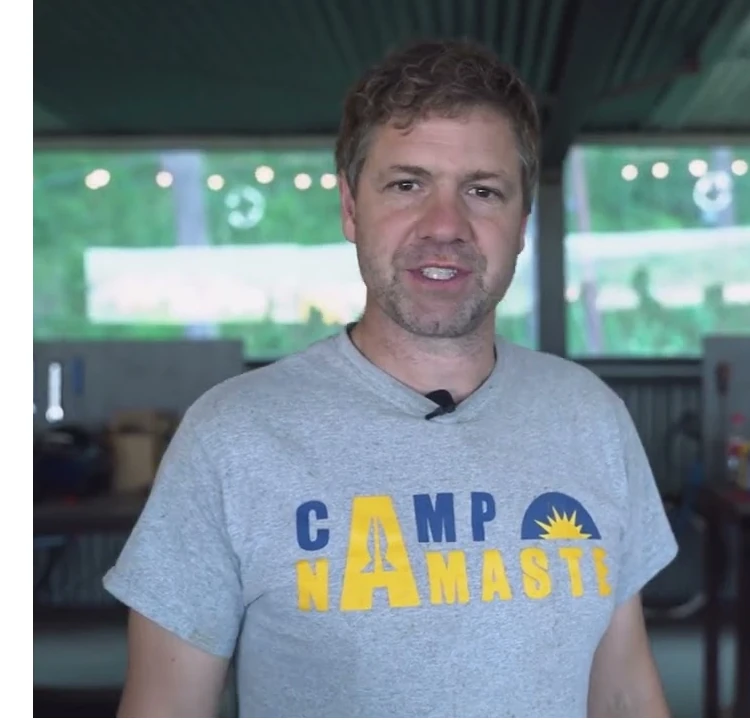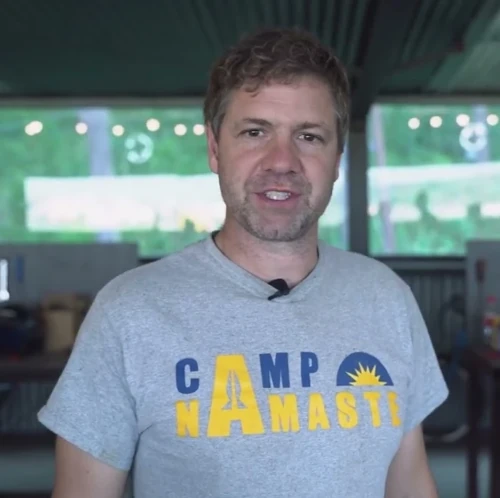
Ever since Russia invaded Ukraine 10 months ago, we’ve been paying attention to its impact on the limb-loss community here in the United States. Thousands of people have lost limbs in this war, and the number’s still climbing. Dozens of new Ukrainian amputees have come to the US for prosthetic care, and Americans have sent money and material overseas to help relief workers on the ground.
But providing on-the-ground help within Ukraine is incredibly difficult, as we’ve described before. Only a handful of American prosthetists have been able to overcome the logistical challenges and get a first-hand look at the conditions facing Ukrainian amputees and caregivers. One of them, Jeff Erenstone, accompanied a trio of practitioners from the Hanger Foundation to Lviv this fall, where they worked with patients and provided training to local prosthetists. A veteran of many international relief trips through his nonprofit, Operation Namaste, Erenstone talked to us recently to share his impressions of what the Ukrainian healthcare system needs and how the US limb-loss community can help. Our conversation is edited for length and clarity.
What were the biggest logistical challenges on the front end?
There’s two aspects of that. There’s the product development work, vetting that the technology that we were going to bring. And then the other side is the logistics of making the connections—who’s gonna get us over the border, where we’re going to stay, all that type of stuff. That was done mostly by Todd Stone, who’s with the Hanger Foundation. He was the main point of contact for the trip, and my role was much more on what type of technological solutions we wanted to bring with us.
What technology did you end up taking over there?
We focused on the Xtremity socket, which is a thermoformable socket-making system. The concept I’ve been working on for a while is to put that in a mobile lab, which we call the Limbkit. I validated it with a few patients before going over there. This kit can be an all-encompassing unit to make transtibial prostheses. It tears down and fits into a box that would easily fit in the bed of a pickup truck or a van and could be transported anywhere in Ukraine. So instead of waiting for weeks, they could get a prosthesis in a day.
Tell me a little more about the Limbkit. What’s in it?
The Xtremity socket utilizes a small oven, sort of like a fancy convection oven with sensors. The material comes in these cylinders, so you pick the right size cylinder, you heat it up in the oven, and then you form it over a model of the patient’s leg. Then you pull that off and assemble the prosthesis, and there you go. The main concept was to have this mobile kit that can be brought anywhere to provide care. The facilities we’re working with are still trying to get their feet under them in their main facility, so they’re not looking to expand into mobile yet. But they’re excited that they have it for when they’re ready to expand.
Was this a government facility?
Everything I’ve just described was done in more or less a national hospital run by the government. They call the organization Unbroken, and they’re trying to set themselves up as the Ukrainian version of Walter Reed. But as I said, they’re still getting their feet under them. We certainly added some capacity for them, and it was quite welcome. But, man, they’ve got a lot of work to do. They’ve only been doing this for a few months, and they’re struggling to deal with these incredibly complex patients. It’s no Walter Reed yet, but it’s the closest thing they’ve got.
That’s one of the obstacles we’ve heard about over and over. Even if you can get the supplies and the material over there, and send over a team of prosthetists to do initial fittings, Ukraine doesn’t have enough trained practitioners to do the long-term care. So it’s hard for a relief mission to have a long-term impact.
We went over there with the idea of focusing on things we can add without complicating the situation. So one of those things—everything I’ve just told you about, focused on relatively simple ways of rapidly producing prostheses—was what I would call our Plan A. But there were a lot of unknowns, so I made sure we had a backup plan that would be very straightforward and have some enduring value that could continue even after we left. And that was prosthetic covers.
That’s something that allows people to feel an emotional bond to their [prosthetic] legs. Soldiers are asking for them. Some of them are asking for anatomically realistic cosmetic covers with hair and everything, and their feeling is, “I went to war, this happened to me, and I want the best.” And we were able to come in and say, “Well, that’s very expensive, and it’s very difficult to get for you. Could we get you the best in a different way? Could we get you the best in a 3D-printed cover that looks really cool? And you’d help create the design that we put on it?”
There aren’t any bottlenecks to that kind of assistance. It doesn’t require physical therapists to understand how to teach the patient to walk. It doesn’t require doctors who practice modern post-amputation care, versus what they were taught back in the Soviet era. Those things are gonna be really complex and difficult to overcome. But we could increase their ability to provide cosmetic covers, and that provides a tangible benefit without a lot of complications. Some of these soldiers are pissed off about what happened to them. But having a badge of honor of their sacrifice, it feels different.
And I take it they have the 3D-printing capacity over there to do this.
They do now, because I brought one over. I set it up, got them up and running, and taught them how to use it.
What kind of design did the soldiers come up with?
Back on the first day of the the invasion, the first thing the Russians did was take over Snake Island. You might be familiar with the story.
Is this where the Russians ordered them to surrender, and the Ukrainian soldiers told them to f*ck off? Was that the incident?
Yeah. It was literally two guys. And that kind of made the rounds and set the tone for the war. It has been taken on by the Ukrainians with pride—even to the point that the government made an official stamp of it. The government image shows a silhouette of a soldier flipping the bird to a Russian warship. That sort of symbolizes the resistance movement. We showed that to the soldiers, and they’re like, “Yeah, we want that.” It looks really cool, like a tattoo, and helps you express your feelings.
This war is nowhere near over. Can you see any way to scale up relief efforts so Americans can make a bigger impact and provide more help to Ukrainians who are losing limbs?
They have some things they have to work on first. But from the beginning, we knew this might not be our only trip. I’m happy with what we did on this trip. We’re gonna keep working on Plan A, but it’s gonna be slow and measured. Plan B is ready to go now. The soldiers want the prosthetic covers now. And there’s a value-add now.
